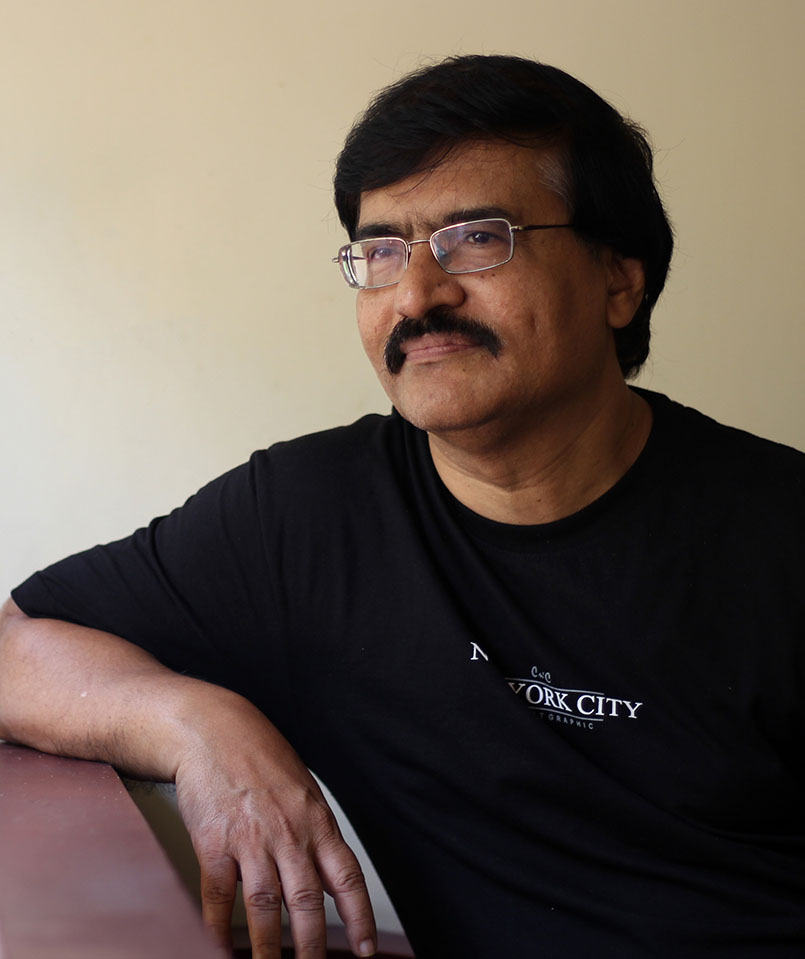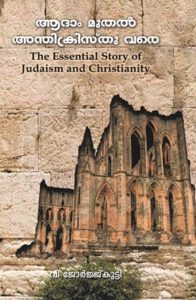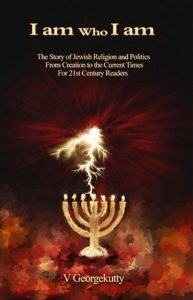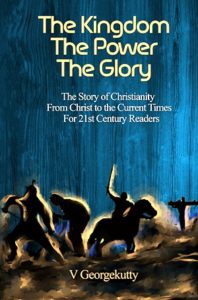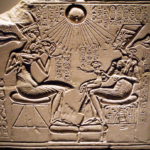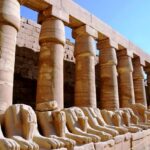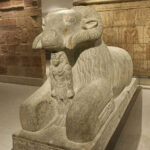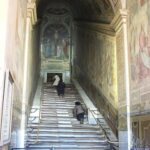“Son of man,
You cannot say, or guess, for you know only
A heap of broken images….”
(T S Eliot, ‘The Wasteland’)
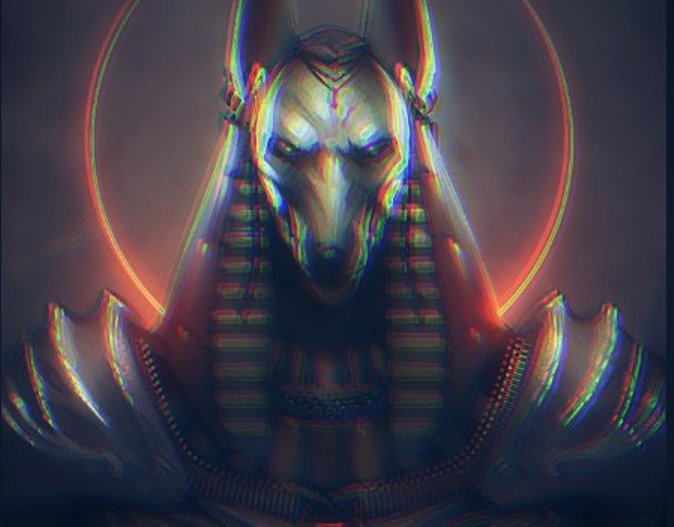
The mystery of existence had baffled the primitive man. The questions he had wrestled with included, ‘Who created the universe?’ ‘Who created humans?’ ‘Is there a God who created the universe and everything in it?’ ‘Why should there be a God?’ ‘Can one prove the existence or absence of a God?’ ‘What happens after death?’ ‘Is there another life beyond death?’ ‘Is there a Hell and a Heaven?’ ‘Can man ever know the answers to such questions?’ Eventually, man came up with the idea of gods. He gave each god a specific name and assigned a set of characteristics to each.
Thus, in the beginning, man created gods. He also developed the images of these gods and the means of propitiating them through rites and rituals. Man believed that if he kept the gods pleased, he will have a life of comfort and abundance. In spite of all the scientific progress he has achieved, the modern man is still in search of objective answers to those fundamental questions of life that had troubled the mind of the primitive man. No wonder, he continues to live in the fear of gods and sticks to those ancient rites and rituals to keep the gods in good humour.
The Gods of Antiquity
Starting much before the Bronze Age and extending far into the Iron Age that had started, depending on the region, between 1200 BCE and 600 BCE, the lives of people from India to North Africa and southern Europe were focussed on the care and feeding of the gods. However, China, sub-Saharan Africa, and Europe might have gone without gods for much of its prehistory. In southwest Asia, Egypt and the Mediterranean lands, there were gods everywhere – several thousands of them. Men and women of those times believed that taking good care of the gods was their most important duty.
In Latin, the term for the “care” of the gods was cultus and so we often come across the “cults” of the ancient gods. A cult was an institution, with great buildings and endowments, with an ancient legacy of texts and rituals, and maintained by self-perpetuating guilds and priesthoods. In the lands of the gods, every worshiper was necessarily a polytheist – a believer in many gods. During the Pre-dynastic period in Egypt ((prior to 3100 BCE), every village and town or settlement possessed its god, whose worship and the glory of whose shrine increased or declined according to the prosperity of the community in which the deity lived.
When the country was divided into sections (districts), which the Egyptians called ḥespu or “nomes”, a certain god, or group of allied gods, came to represent each nome. Such god(s) obtained the pre-eminence over all the other gods of the nome. It became customary in each nome to regard the god of that nome as the “Great God,” and to endow him with all the powers and attributes possible. We have, unfortunately, no means of knowing when the country was first split up into nomes. But the division must have taken place at a very early period, and the gods who were chosen to represent the nomes were undoubtedly those worshipped in the large towns or settlements during the Pre-dynastic period.
A body of priests was attached to the service of each nome-god. They divided among themselves the various duties connected with the service of the gods, viz. the maintenance of the buildings of the temple, making copies of religious works, and imparting religious education to the community. The high priest of each great city had borne a special title. The high priest of a great nome possessed a power, which was hardly inferior to that of the nomarch (the political ruler of the nome) himself. It seems that the highest permanent priestly officials were very few and the “servants of the god” very many. The priests were not subject to any external authority.
The Image Gods
Many of the gods of antiquity were represented in anthropomorphic images – statues in the form of a man or a woman. These were usually of superhuman size and always made from the finest materials. In Egypt, some of the gods had animal shapes and therefore called “theriomorphic”. The Greek word for “image” is eikon. Thus, the cult of the image-gods was referred to as “iconic.” The image-gods lived in temples as splendidly built as the community could afford. The gods received the sacred meals that worshipers offered to them from an altar. The triad (image, temple and altar) was characteristic of cults in the cities of Egypt and the Near East from circa 3000 BCE onward. In Greece and Italy, iconic cults came much later, but by circa 500 BCE, every proper Greek, Etruscan and Latin city had at least three image-gods, usually housed in three impressive temples.
The image-gods were designed to astound the worshipper. A glimpse of the magnificently crafted gods, specially adorned in gold and glitter on festival days, would transport the worshippers for a moment to another plane of existence, away from the humdrum of daily life. Some cities of Greece and Mesopotamia boasted of gods that were forty feet tall. It was often impossible to house these giant image-gods in a temple. Consequently, these gods were often placed in the front courtyard of the temple. The core of the statue might have been wood, but if the community was wealthy enough, it covered the core with ivory, silver or gold, with beautiful stones for the eyes and accoutrements. Obviously, the maintenance of the cult was a costly affair. Iconic cults were, therefore, characteristic of cities and kingdoms and the most spectacular of the image-gods existed in cities that were centres of enormous political and military power.
Of course, it is hard to understand how millions of people, for generation after generation for thousands of years, could have believed that the statues, irrespective of its spectacular looks, were gods. Hans Christian Andersen’s famous tale, “The Emperor’s New Clothes” captures the principle at work here. Hans tells about a couple of weavers approaching the emperor and promising to make a magnificent dress for him. These cunning weavers told that only those who are fit for the position they hold would be able see the cloth. They collected precious fabric, golden threads and other costly materials for the dress and went through the motions of weaving the royal attire. Actually, there was no material on the looms. However, none of the dignitaries who went to the weavers to see how the dress was shaping up dared to say that the looms were empty.
On the appointed day, the weavers brought the royal dress to the Emperor. Again, everyone saw that the weavers had nothing in their hands, but kept quiet. The emperor undressed and the weavers acted dressing up the naked emperor. The people around him saw that the emperor had no clothes. The emperor too knew it. Yet everyone was praising the beauty and elegance of the emperor’s new attire. Eventually, the emperor came out of the palace to meet the assembled crowd. People were appalled to see their naked ruler. But, they too kept praising the magnificence of the non-existent dress. Then, a little child cried out that the emperor had no clothes. The moral of the story is that if enough people believe something, we too are likely to believe the same, irrespective how contrary it is to what our common sense tells us.
Now, think of people who had grown up in a city where for several millennia all its inhabitants had been singing hymns and praying to a mammoth and magnificent statue and the priests of the statue were the most respected men in the city. These people had also been seeing devotees regularly bringing hard-earned sacrifices to the statue’s altar. Obviously, people would see the statue as a god. Although the iconic cults first began late in the fourth millennium BCE, it might have taken a few generations to catch hold of popular imagination.
At least once during the Bronze Age, there was a serious challenge to image-gods in Egypt. In circa 1350 BCE, the Pharaoh Akhenaton came to believe that the image-gods were not gods and that the whole world was ruled and blessed by a single god, the sun. Akhenaton closed down the great temples of the iconic gods, ended the sacrifices and dispersed the priesthoods. But, people hated him for it. After his death, the great temples were reopened, the statues were reinstalled and Akhenaton’s memory was cursed. Incidentally, Moses, who supposedly wrote the holy laws and defined the monotheistic theology of Judaism, had lived in Egypt more or less during the period of Pharaoh Akhenaton. Scholars suggest that Judaism was inspired by the reforms implemented by Pharaoh Akhenaton.
The Invisible Gods
The aniconic cults (cults that had no cult statues) might have been a later development, established as an alternative to the iconic (image) cults. Semi-nomadic pastoralists, and villagers who lived far from a city, had neither the expertise nor the wherewithal to construct impressive statues and elaborate temples. That brought in the idea of invisible gods. These gods were supposed to live on mountaintops or in the heavens, beyond the sight of mortals but responsive to their calls when invited to a sacrificial feast. (For instance, the God of Judaism was connected with Mount Horeb/Mount Sinai). Many of the invisible gods were worshiped at “high places” – flat hilltops or commodious mesas, a third or half way up the side of a mountain. After the community had climbed to the high place, the crowd would with prayers, song and dance summon the god from the heavens. After the officiating priests signalled that the god had arrived, they would sacrifice the animals brought along.
The aniconic gods were just as anthropomorphic (“like humans”) as were the image-gods. Yahweh (Jehovah) was male and Asherah female. El was elderly and Baal youthful. People had conceived the aniconic gods as incorporeal super-humans, possibly with extra appurtenances such as wings. They differed from humans in their miraculous power, in their immortality, in their knowledge and in their invisibility. However, just like men and women, they loved and hated, laughed and wept, grew angry and relented, were jealous and generous, vengeful and merciful. The Jews never made a graven image of Yahweh, but they visualized him as an anthropomorphic apparition of immense size. So, when they built a temple for him in Jerusalem, they made the Holy of Holies thirty feet high so that their god had enough headroom!
Aniconic cults were the norm in the less urbanized parts of the Levant and in much of Anatolia (Asia Minor). In Iran and India too, the typical god lived in the heavens. By the seventh century BCE, the Greeks had built cities for themselves and temples for their gods. However, a century earlier, Homer, the ancient Greek epic poet (circa 850 BCE), and Hesiod, the Greek poet (eighth century BCE), had thought of the gods as dwelling on Mount Olympus. Wherever they lived, the invisible gods were able to fly in a moment to distant places, even to the ends of the earth, in order to bless their worshipers with their presence.
Making a virtue of necessity, the primitive people came to regard their invisible gods as superior to the elaborate and expensive image-gods worshiped in the cities. Going still further, some savage societies insisted that the true gods were invisible. Emboldened by and acting on this belief, c. 1200 BCE raiders from uncivilized and disadvantaged places all-round the Mediterranean assaulted and plundered cities, palaces and temples. Among the most successful raiders were the “Sons of Israel,” (the Jews) who sacked cities and slaughtered populations all over southern Canaan. Not surprisingly, the Hebrew Bible insisted that no graven image anywhere was a match for the invisible and invincible Yahweh.
Sacrifice and Worship
“In the beginning Man created God; and in the image of Man created he him” (Jethro Tull). Yet, the ancients believed that gods created humankind, in order to serve them and that worship of the gods was the most important duty of humankind and its reason for existing. In other words, god had created humans so that the gods would not have to concern themselves with such things as finding proper food, shelter and entertainment. These became the concerns of their human devotees.
Whether iconic or aniconic, in all the cults of the Bronze Age and early Iron Age, sacrifice was the most important part and the culmination of worship. Everyone needs to eat, and the gods were no exception. A few of the gods were vegetarian, but typically, a god preferred offerings of meat. The animals sacrificed were of specified age, colour and condition: lambs in the springtime, a horse for Indra or Poseidon, and for Yahweh, the Jewish deity, a daily menu of sheep and oxen.
Before the advent of refrigeration, people needed to eat the meat of an animal soon after it was butchered. The slaughter of a large animal was therefore an occasion for the entire community to gather for a feast. When the cuts of meat were roasted on the altar, the smoke and aroma wafted inside the temple. The gods supposedly enjoyed this aroma. The Hebrew Bible tells of it as“… an aroma pleasing to the Lord” (Leviticus 1: 9). Moses had apparently incorporated the pagan sacrificial ideas of the primitive world into the Jehovah faith he had instituted.
Because music was as pleasing to the gods as to mortals, hymns, songs, and the playing of flutes and stringed instruments normally preceded the sacrifice. The great temples employed professional musicians and dancers, but even the aniconic gods at their high places were treated to the best music with which their worshipers could come up. Like we plain humans, praises delighted the gods too. The psalms in the Hebrew Bible were composed to serve this purpose.
Purity
The ritual of worship demanded purity everywhere. Purity was, for the most part, synonymous with cleanliness. Anything dirty, disgusting, or inappropriate was bound to disgust the god, which in turn vitiated the sacrifices and ceremonies. Priests often wore clothes of white linen and in a few cults so did all of the worshipers. People with running sores or disabilities were kept away, lest they disgust the god. Menstruating women were forbidden because of offensive odours.
As concerns and demands for purity increased, it became obligatory for anyone associated with the ceremony to avoid “uncleanness” in the days before the ceremony and even – in some places – for life. Food that the priests ate could defile them. So the eating of “unclean” food was forbidden. Occasionally the list of forbidden foods grew long and burdensome. Since sexual intercourse was usually regarded as defiling, the priests of many temples were forbidden to have sex on the night before a sacrifice. In a few cults, the priests were required to remain celibate throughout their priesthood.
In return for all of this ritual purity, for the sacrifices, and for the rest of the worship that they received from the human community, the gods supposedly showered their blessings upon the community. These blessings included favourable weather, fertile fields and bountiful harvests, good health, plentiful offspring for humans and animals, prosperity, and protection from enemies.
The Powers and Limitations of the Gods
Every ancient society had a creation story, which accounted for heaven and earth and everything that lived on the earth. In many, although not all, of these stories a god created the world. The Babylonian Creation Epic credited creation to their god Marduk. The Egyptians had various creation stories. The Greek myths did not feature a creator god: heaven and earth had come into being many divine generations before Zeus was born. The sun, moon and stars, therefore, were not under the control of Zeus but were themselves divine powers.
The very condition of polytheism meant that a single god could not be responsible for the world and all its inhabitants. In most of the pantheons, a senior god served to arbitrate disputes when two or more of the other gods were at cross-purposes. Thus, in the Levant old El might overrule Anat, Baal, or some other young and headstrong god. Similarly, the early Greeks supposed that Zeus could override the wishes and projects of the other Olympians, but that even Zeus was powerless to prevent what was fated.
The early Israelites too assumed limits on the power of any one god, although over the centuries the continuous revision of their sacred books eliminated most traces of polytheism. In Israel, Elohim originally meant “the gods” and it was the gods as a group that took care of the land and its people. In the early tenth century BCE, Yahweh (Jehovah) was still primarily a god of war, and offerings were made to Jehovah before a battle and after a victory. Other gods were approached for other blessings: Baal provided good weather, Asherah fertility, and El whatever else was required.
Patron Gods
In a large kingdom such as Egypt, in an imperial state such as Assyria, or in a cultural sphere such as Mesopotamia we find a pantheon consisting of many gods. However, a state often concentrated its attention on a single patron deity. A patron god, or tutelary deity, was entirely concerned with the welfare of the kingdom that worshiped him or her. That was a satisfactory arrangement, since each of the neighbouring kingdoms had its own patron god that blest and protected it. Thus, the Israelites worshiped Yahweh, Ammonites worshiped Milkom, Moabites worshiped Kemosh and so on. When the patron god was angry because of some negligence or slight, he typically punished not the guilty individuals but the entire city or kingdom whose patron he was.
————————
P.S.: Adapted from the author’s book, ‘I am Who I am: The Story of Jewish Religion and Politics from Creation to the Current Times for 21st Century Readers’ (Chapter I – ‘In the Beginning – the Pagan Roots’)
